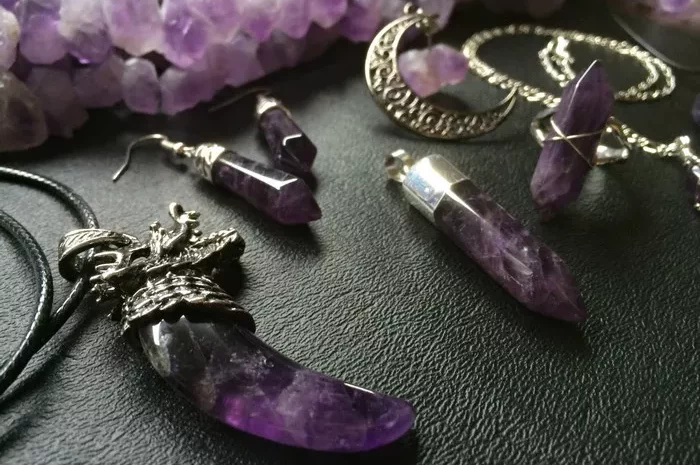Amethyst geodes are a fascinating natural wonder that has intrigued collectors and enthusiasts for centuries. These geological formations are characterized by their hollow, rounded shapes filled with crystals, often featuring vibrant amethyst hues. Geodes can vary in size, ranging from small, handheld specimens to large, room-filling displays. Understanding where to find these stunning geological treasures requires a bit of geological knowledge and some exploration.
What Are Amethyst Geodes?
Amethyst geodes form within various types of rock, primarily volcanic and sedimentary rocks. They are created when gas bubbles or voids within the rock fill with mineral-rich water. Over time, this water evaporates, leaving behind crystalline structures. The color of amethyst comes from trace amounts of iron and other impurities in the mineral-rich solution. The crystals inside the geodes can grow to be quite large, creating breathtaking displays of natural beauty.
Types of Rocks That Host Amethyst Geodes
Volcanic Rocks
Rhyolite: This type of volcanic rock is rich in silica and often forms large geodes. Rhyolite can be found in various geological settings, including volcanic fields and lava flows. When rhyolite cools slowly, it allows for the formation of large, well-formed crystals.
Agate: While not traditionally classified as a volcanic rock, agates can sometimes be found within volcanic settings. They are characterized by their banded appearance and can host small to medium-sized geodes.
Sedimentary Rocks
Conglomerate and Breccia: These rocks can contain fragments of other rocks, including volcanic rocks that may have already hosted geodes. Over time, these fragments can weather and erode, revealing the geodes within.
Limestone and Dolomite: In rare cases, geodes can form within carbonate rocks like limestone and dolomite. These rocks are more commonly associated with cavernous formations and stalactites but can occasionally yield geological surprises.
Geographic Locations of Amethyst Geodes
United States
Nevada: Known for its rich geological diversity, Nevada is a prime location for finding amethyst geodes. The state’s volcanic history and diverse rock types make it an excellent place to explore for these natural treasures.
California: California’s Gold Country is not just famous for its precious metals; it also yields amethyst geodes. Areas like the Mother Lode region have been known to produce high-quality specimens.
Wisconsin: Surprisingly, Wisconsin is also a notable location for amethyst geodes. The state’s geological history includes volcanic activity, which has contributed to the formation of these geological wonders.
South America
Bolivia: Bolivia’s Andes Mountains are rich in geological diversity, including rhyolite and other volcanic rocks that can host amethyst geodes.
Brazil: Brazil is well-known for its gemstones and minerals, including amethyst. While the majority of Brazilian amethyst is found in crystal form, geodes can also be found in certain regions.
Africa
Namibia: Namibia’s geological landscape is diverse, with areas rich in volcanic and sedimentary rocks. This makes it a potential hotspot for finding amethyst geodes.
Madagascar: Madagascar’s unique geological history has resulted in a wide variety of minerals and gemstones, including amethyst geodes.
Asia
India: India’s geological diversity includes areas rich in volcanic and sedimentary rocks, making it a potential source for amethyst geodes.
Siberia: Russia’s vast territory includes regions with a rich geological history, and Siberia has been known to produce amethyst geodes.
How to Identify and Collect Amethyst Geodes
Visual Identification
Color: Amethyst geodes are typically identified by their distinctive purple hue. While the color can vary in intensity, the telltale purple color is a dead giveaway.
Shape and Texture: Geodes are often rounded or oval in shape, with a hard, rocky exterior. The interior can be lined with crystalline structures that are easy to identify once the exterior is opened.
Exploration Techniques
Rockhounding: This involves searching in likely geological settings, such as volcanic fields, sedimentary rock formations, and riverbeds. Rockhounds often use geological maps and guides to target areas with a higher likelihood of finding geodes.
Mining: In some areas, commercial mining operations exist specifically for extracting geodes and other gemstones. While this method can yield large quantities of specimens, it is typically more expensive and requires special permits.
Opening Geodes
Safety First: Always wear protective gear, such as safety glasses and gloves, when handling and opening geodes. The process can be messy and potentially dangerous.
Tools: Various tools can be used to open geodes, including drills, chisels, and hammers. The key is to apply pressure carefully and evenly to avoid damaging the internal crystals.
Preservation and Display of Amethyst Geodes
Cleaning
After opening a geode, it may require cleaning to remove any dirt, debris, or matrix rock. Gentle brushing with a soft toothbrush and water can often suffice. Avoid using harsh chemicals or abrasives that could damage the crystals.
Stabilization
Some geodes may require stabilization, especially if they are fragile or have cracks. This can involve filling in cracks with epoxy or other materials to prevent further deterioration.
Display
Amethyst geodes can be displayed in various ways, including on shelves, stands, or even incorporated into interior design elements like tabletops or light fixtures. When displaying, consider using a soft cloth or padding to protect the surface of the geode.
Conclusion
Finding amethyst geodes can be a rewarding and educational experience. By understanding the geological conditions that favor their formation and the geographic locations where they are most likely to be found, enthusiasts can embark on their own rockhounding adventures. Whether exploring volcanic fields in the American West, sedimentary formations in Wisconsin, or the diverse geological landscapes of South America and Asia, the thrill of discovery awaits those who seek out these natural wonders. With the right tools, knowledge, and a bit of luck, amethyst geodes can become a cherished addition to any collection.
Related topic:
- Is It Better to Wear Amethyst on Your Left or Right Hand?
- How Many Carats of Amethyst Should Be Worn
- Is Wearing Amethyst Suitable for Pisces?


